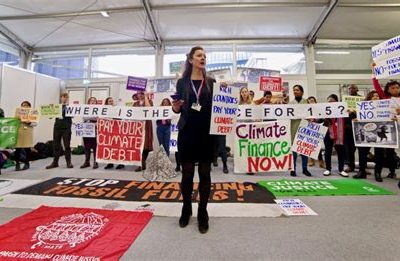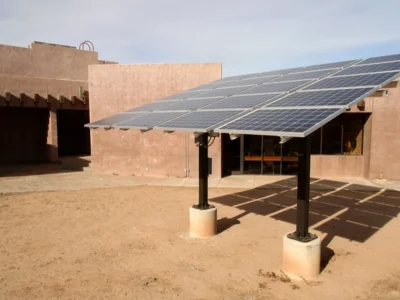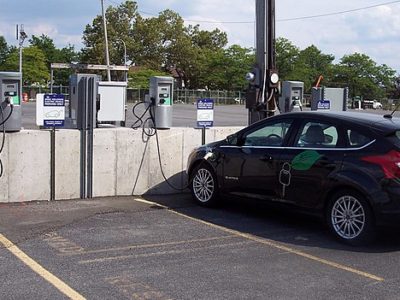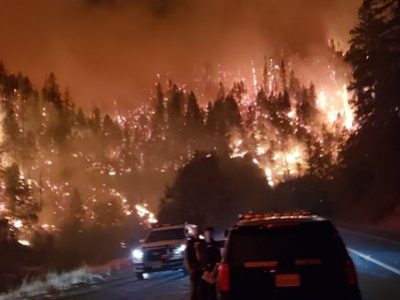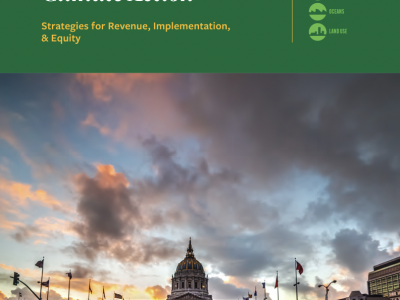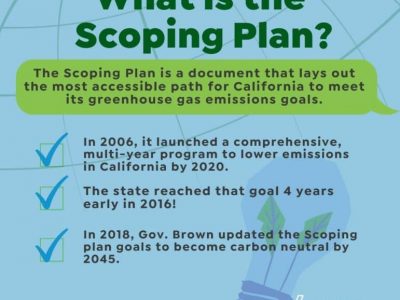Guest Contributor Veronika Bagi: Loss and Damage Finance Now! Or Not?
A view from inside the COP27 loss and damage negotiations
Veronika Bagi (UCLA LLM ’23) attended COP27 as a member of the UCLA Emmett Institute delegation and as an Expert Member of the Hungarian delegation. She writes here in her personal capacity. The 27th Conference of the Parties to the United Nations Framework Convention on Climate Change (COP27) in Sharm el-Sheikh, Egypt, ended last Sunday, November 20, 1.5 days behind schedule. The main outcome of the conference is the establishment of a dedicated loss and damage f...
CONTINUE READINGWhat is jurisdiction, and why is it important to climate change litigation?
Local actors seek climate change damages from the biggest fossil fuel companies through state law litigation In the wake of West Virginia v. EPA and the Supreme Court’s deregulatory trend, state action remains an avenue for climate change adaptation and mitigation. While the specter of the major questions doctrine hampers most federal agency actions to address climate change, it leaves untouched state and local authority. It also leaves untouched the litigation that...
CONTINUE READINGClimate Change and Indian Country
The tribes are on the front lines of climate change.
In light of Native American Heritage Day last Friday, we should also be thinking about the future of the tribes in the era of climate change. Tribes face serious challenges from climate change, but also some potential opportunities. In terms of climate impacts, many tribes are at high risk. Tribes are especially vulnerable to climate change because they were displaced from their original homes onto lands that were often marginal to begin with and are becoming more cha...
CONTINUE READINGIs a Green Trade War Brewing?
The Inflation Reduction Act has inflamed trade tensions around the world, just as we predicted in 2015
It is rare that a law professor gets to say with some justification, "I told you so." But… Wait for it… I did tell you so. Or, more precisely, Mark Wu and I predicted the current conflict pitting the United States against the rest of the world in our 2015 Northwestern Law Review piece, "Next Generation Trade and Environment Conflicts." Before touting our Nostradamus-like forecast, though, some quick background is in order. Mark and I argued that the standard “fir...
CONTINUE READINGBeing Thankful for Environmental Progress
Environmentalists do a lot worrying, seasoned by dashes of anger and despair. Here are some things to feel good about instead.
Environmentalists have a tendency to focus on the environmental harm we haven't been able to prevent and the frustrations of making further progress. Once in a while, though, it's good to look at the progress we've made. Take a few minutes this holiday weekend to be thankful for some of this year's steps forward on climate change -- and to the people whose years of hard work made these forward steps possible. And be grateful to all the people who worked very hard, t...
CONTINUE READINGWildfires and the Grid
Wildfires are huge problem in California. Maybe we can learn from those on the other end of the Pacific.
California and Australia are 8000 miles apart, but it turns out they have similar wildfire problems. And in both cases, the electric grid and climate change are part of the equation. The problems in California and the rest of the West are familiar to many readers. Though they don’t necessarily get much attention in the U.S., Australia has had some horrendous fires, with blackouts as one consequences. The Black Summer fires burned over 30 million acres of land, ca...
CONTINUE READINGHow Cities Can Optimize Federal and State Funding Opportunities for Local Climate Action
Part Three of CLEE’s analysis for funding and financing municipal climate action
As my colleagues Katie Segal and Ted Lamm have covered here and here, last week our team at CLEE released an analysis detailing how San Francisco can fund its ambitious Climate Action Plan. Katie provided an overview of the city’s Climate Action Plan (CAP), describing how San Francisco will need to secure tens of billions of dollars over the coming decades to deploy the emissions reduction strategy set forth in the CAP. Ted’s post explained how a city can use bonds, ...
CONTINUE READINGHow Can Local Governments Pay for Climate Action?
San Francisco Analysis Points the Way for Peers
As my colleague Katie Segal wrote earlier this week, our team at CLEE recently released a report detailing how San Francisco can fund its ambitious Climate Action Plan. As more local governments in California and around the country develop robust climate action plans–and as federal action to reduce emissions remains unpredictable as ever–it is increasingly clear that local strategies will be a key driver of decarbonization and resilience. However, these local ap...
CONTINUE READINGCoordinating Climate Policy
We have a White House climate czar. That’s not going to be enough.
The Inflation Reduction Act (IRA) creates a massive funding program for clean energy and other climate policies. This funding complements regulatory efforts at EPA elsewhere. Yet authority over energy policy is fragmented at the federal level. Without better coordination, there’s a risk that various policies will mesh poorly or operate at cross-purposes. And state governments, who are also major players in this area, will find it hard to coordinate with the Feds if t...
CONTINUE READINGFunding & Financing San Francisco’s Ambitious Climate Action Plan
New CLEE analysis recommends revenue, equity, and implementation measures for city climate action
Cities are leaders in climate policy and planning, and many cities have developed local climate action plans (CAPs) that envision strategies to reduce emissions and increase resilience in a changing climate. Hundreds of local governments in California have adopted such plans, ranging from dense Bay Area cities to rural Central Valley counties. However, few of these cities have built detailed strategies to advance equity goals–and even fewer have figured out how they wi...
CONTINUE READING



